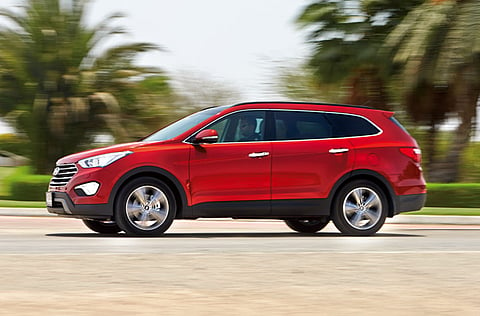Hyundai Grand Santa Fe taken on a test drive
Hyundai goes XXL with its seven-seater Grand Santa Fe

Hyundai has proved time and again that it’s no prisoner of its past. The enormous progress the South Korean carmaker has made in terms of design, build quality and engineering over the past decade is testimony to the fact that it took home valuable lessons from its previous mistakes.
And it seems it’s also learning from the mistakes of rivals, especially Nissan, when it comes to positioning its cars.
While the Japanese carmaker seems to have tied itself into a knot with its eight SUVs and their overlapping prices and specs, Hyundai has gone the opposite way by streamlining its utility vehicle line-up further.
The Vera Cruz, which had been on life support for a few years, has been euthanised and its position in the family has been taken over by the Grand Santa Fe, a longer wheelbase, seven-seater version of the regular Santa Fe.
By doing that, Hyundai has covered the entire large crossover/SUV market with just one nameplate, leaving the Tucson to take care of the entry-level crossover segment.
All seats including the power-adjustable driver’s seat with power lumbar support are supportive and comfortable.
The full-length panoramic sunroof adds to the sense of roominess in the cabin. Meanwhile the extra glass area in the rear quarter makes it less claustrophobic for third-row passengers, who get their own climate control switches as well.
And as you’d expect, the Grand Santa Fe can carry considerably more cargo than its shorter sibling with a remarkable 634 litres of space when the third-row seats are folded flat.
Further cargo space can be freed up by folding the 40:20:40 split second-row seats, making it one of the most functional SUVs in this price range.
Also, despite the steering having three different modes — Comfort, Normal and Sport — switching between these does not bring about any perceivable difference in its response, which is kind of detached.
But the inherent lightness of the steering makes it a breeze to park and manoeuvre in tight spots.
Standard features include the now customary Bluetooth, USB and auxiliary jacks as well as safety features like ESP, Brake Assist, traction control, stability management and seven airbags.
This story first appeared on wheels in August 2014
Sign up for the Daily Briefing
Get the latest news and updates straight to your inbox


